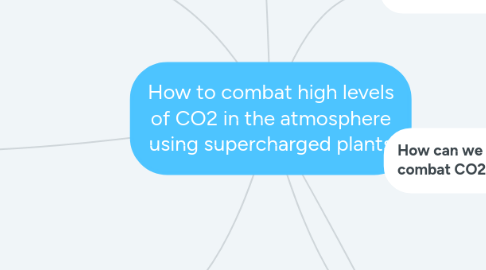How to combat high levels of CO2 in the atmosphere using supercharged plants
by Mikhail Brusnikin


1. CO2 is harmful for people and environment. True or False?
1.1. CO2 is a polutant - bad for climate
1.1.1. Actually no, it can be turned into sugars
1.2. CO2 is important for plant photosynthesis
1.2.1. Plants take CO2 from the air and turn it into sugars
2. Use of genetically modified plants in farming
2.1. Plants with deep and large root system will store lots of carbon
2.1.1. this will enrich the soil and increase the yield
2.2. Challenges
2.2.1. Experiment is still running
2.2.2. It takes time to grow the genetically modified crops and see the results
2.2.2.1. While the population, demand for food and CO2 emissions are rising
2.2.3. Lot of land is needed to test
3. Transfer of CO2 (carbon) from air to the soil
3.1. Enriches the soil
3.2. Increases crop yield
3.3. Soil retains water better
4. link to the video - https://www.ted.com/talks/joanne_chory_how_supercharged_plants_could_slow_climate_change/transcript#t-646856
5. Mikhail Brusnikin
5.1. Group 181
6. What is Suberin?
6.1. Natural Carbon-Storage Device that all plants produce
6.2. Suberin stored in the roots of plants
6.3. Genetic modification can increase the amount of Suberin in plants
7. How can we use Suberin to combat CO2 emissions
7.1. Increase the amount of Suberin in plants using CRISPR technology
7.2. The CO2 is turned into sugar (carbon)
7.3. More Suberin = more CO2 is taken down from the atmosphere
7.3.1. Suberin is tired in the roots, plants with deeper and larger roots are needed
8. Genetic Revolution timeline:
8.1. 1980s Molecular Genetic revolution
8.2. 2000s Genomics Revolution
8.3. 2010 Precision Breeding& Genome editing (CRISPR)
8.3.1. Use of genetically modified plants to fight CO2 emissions
